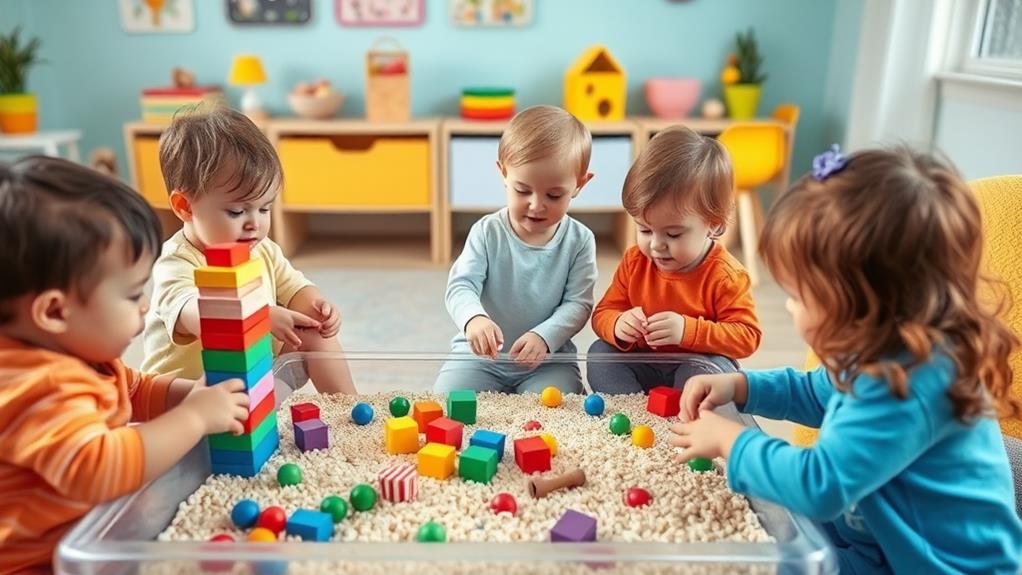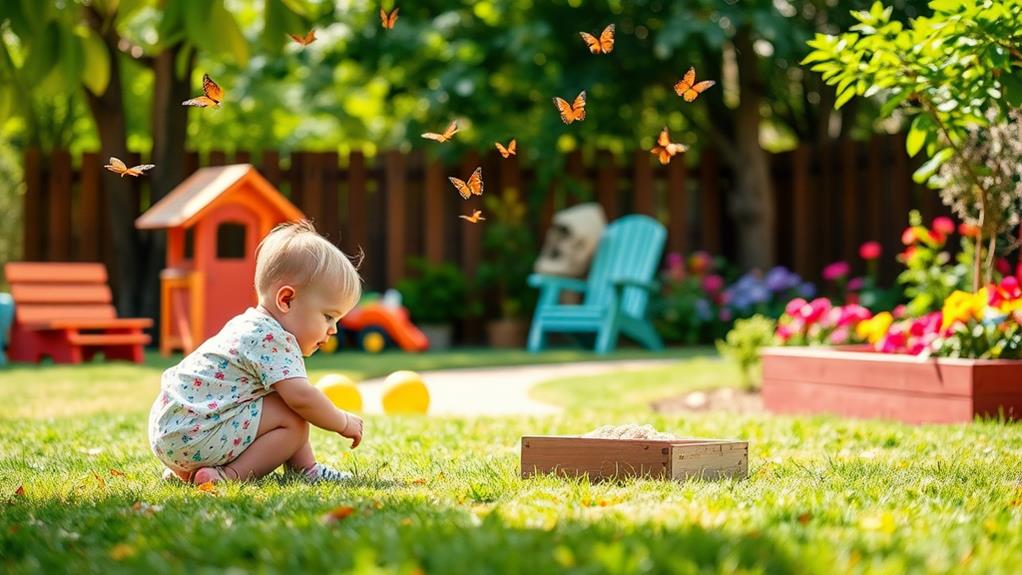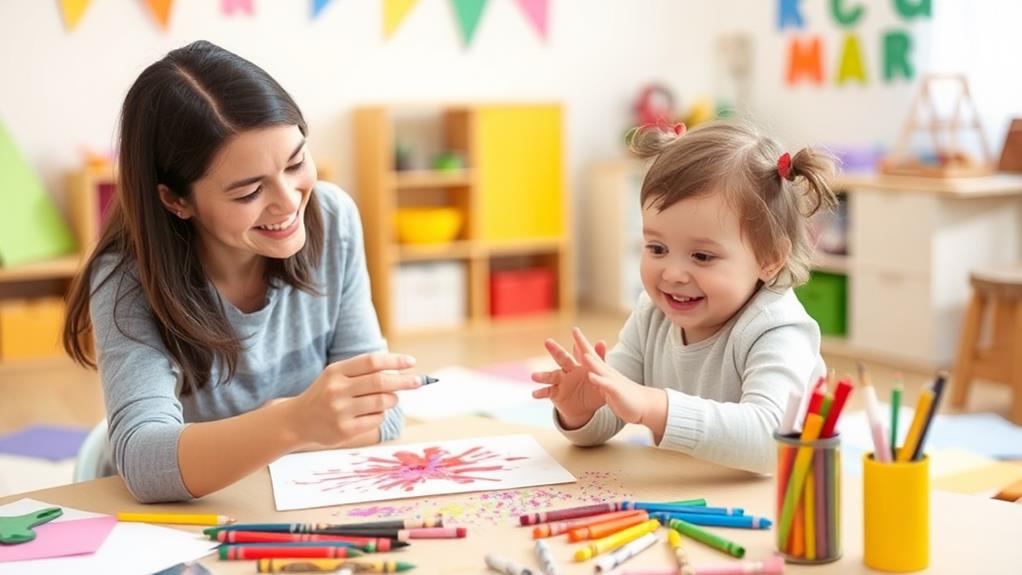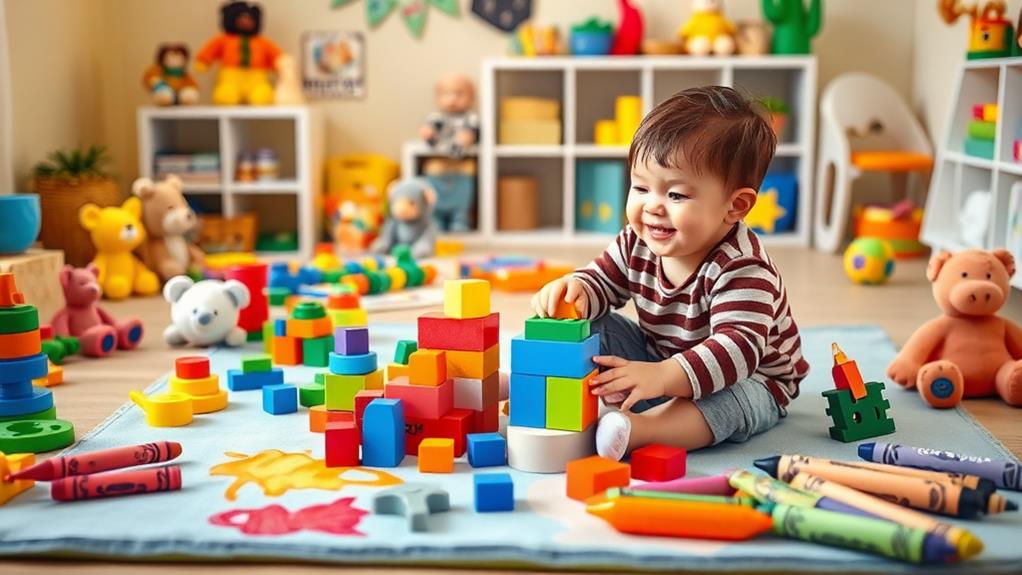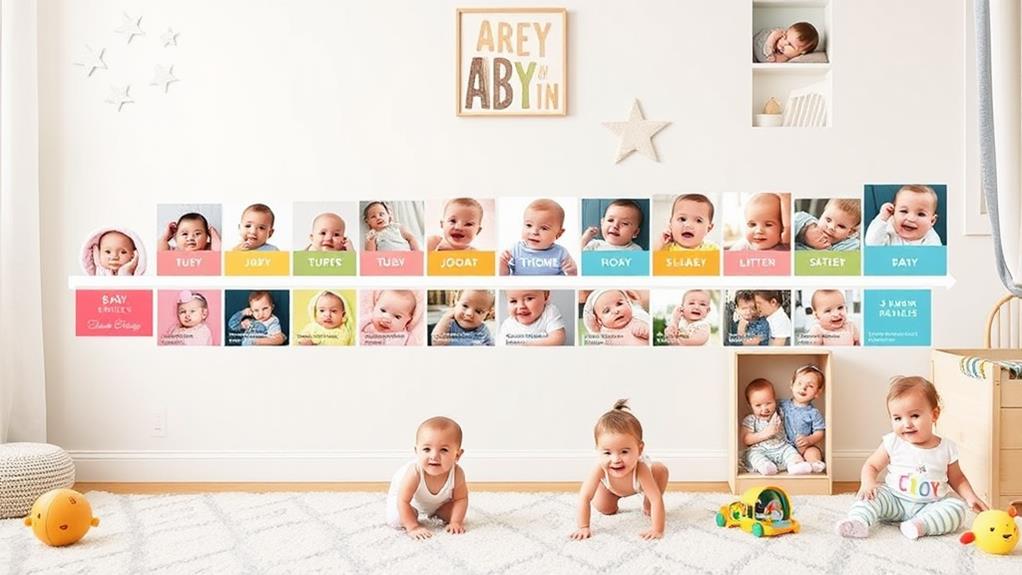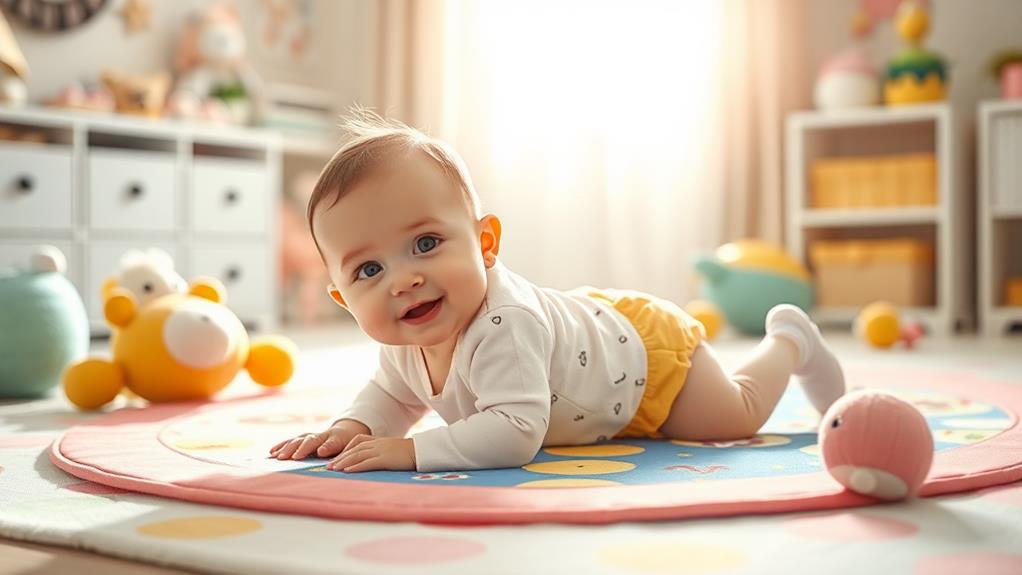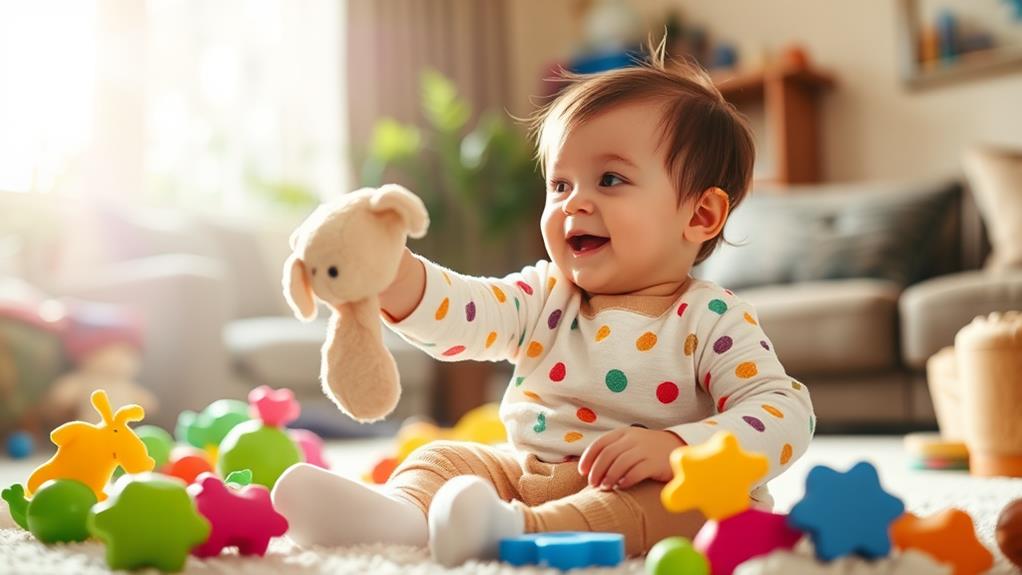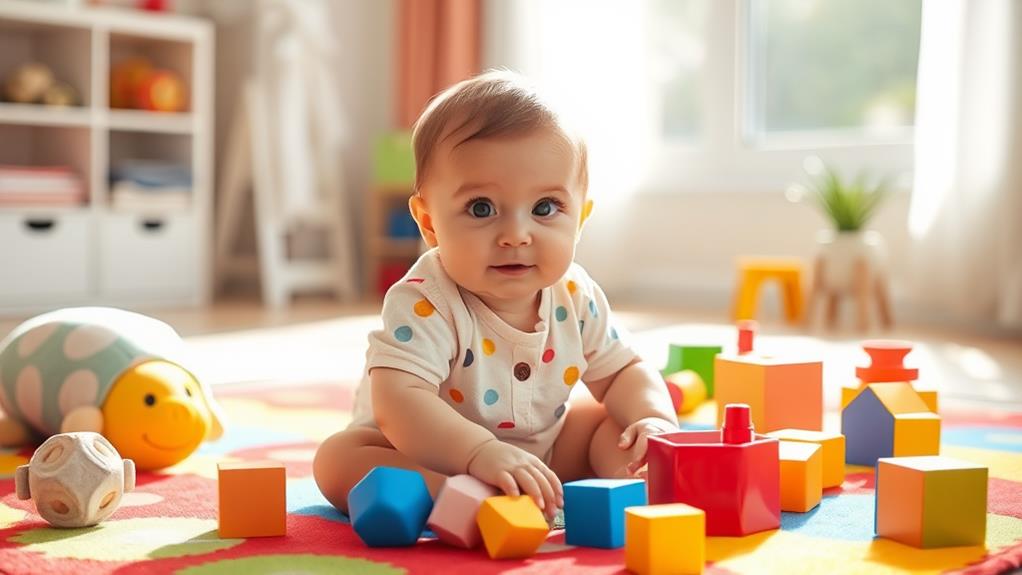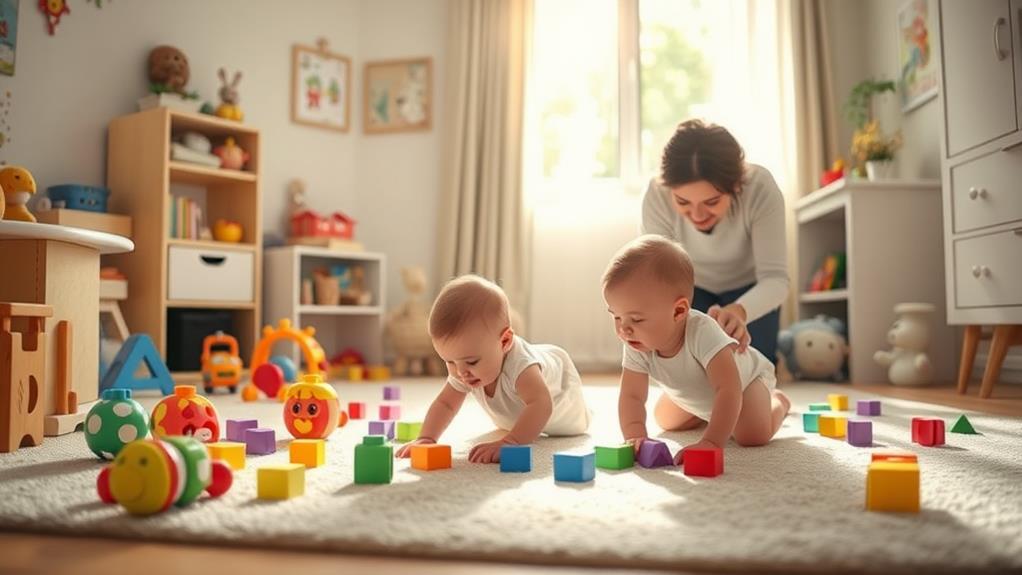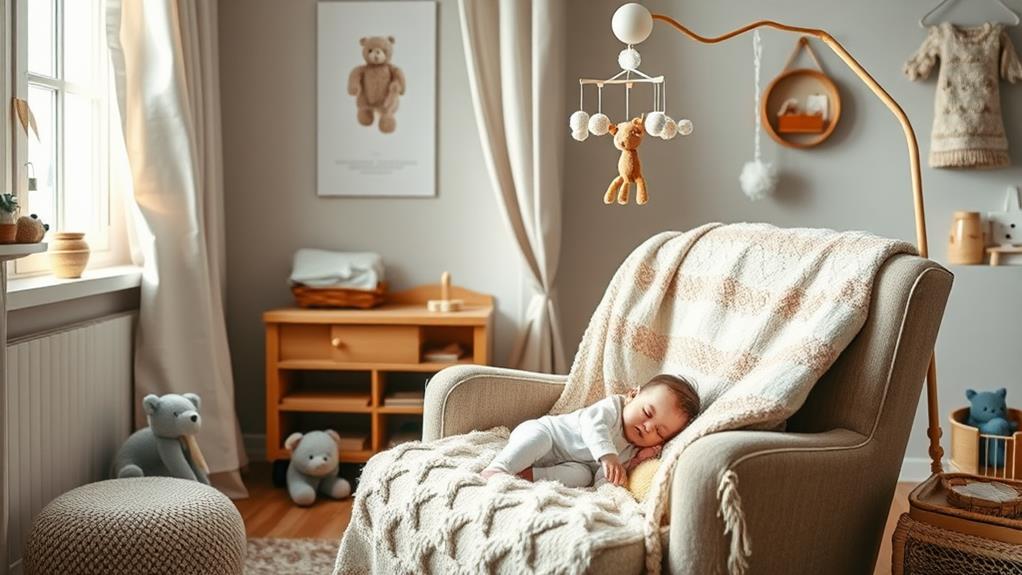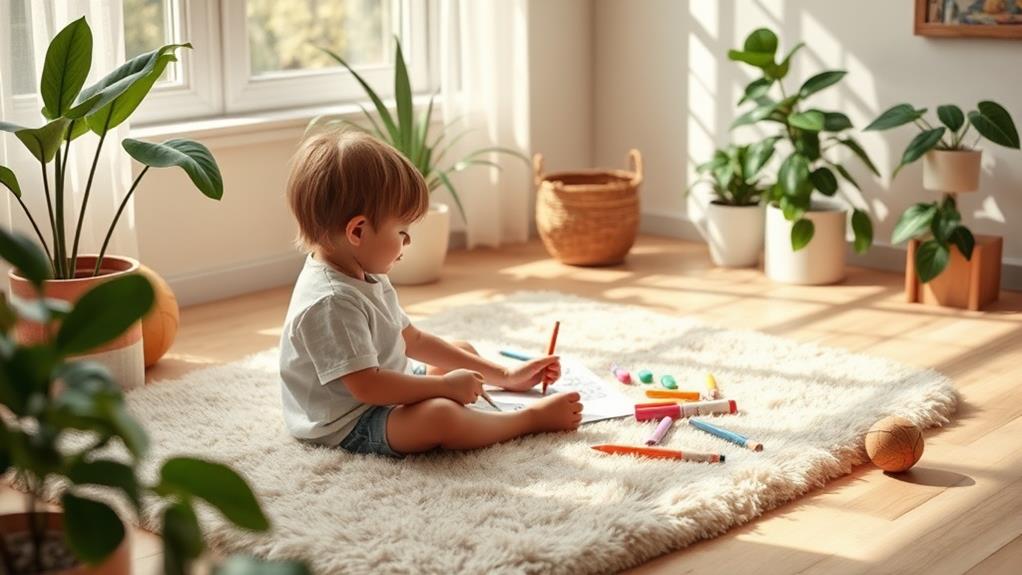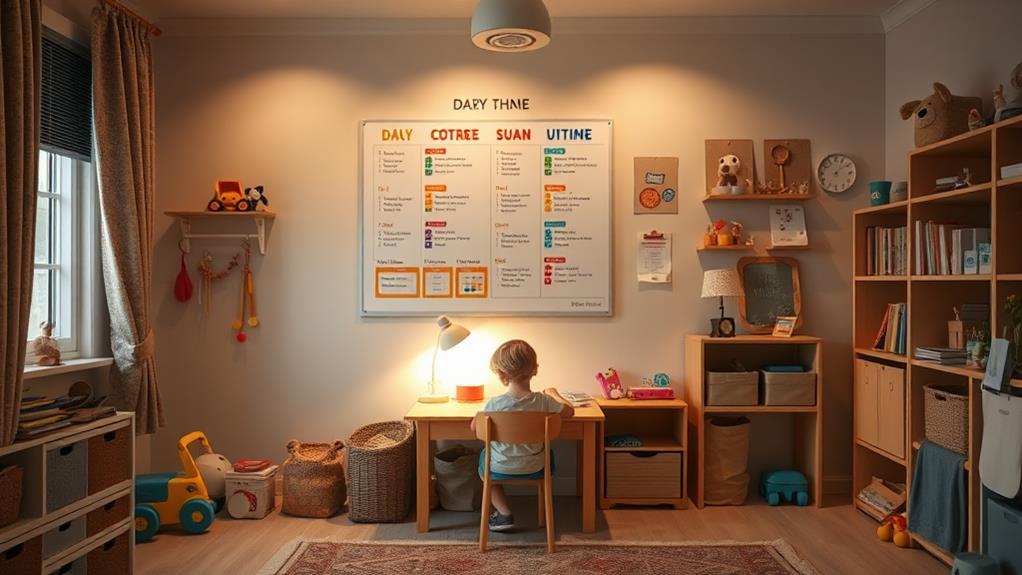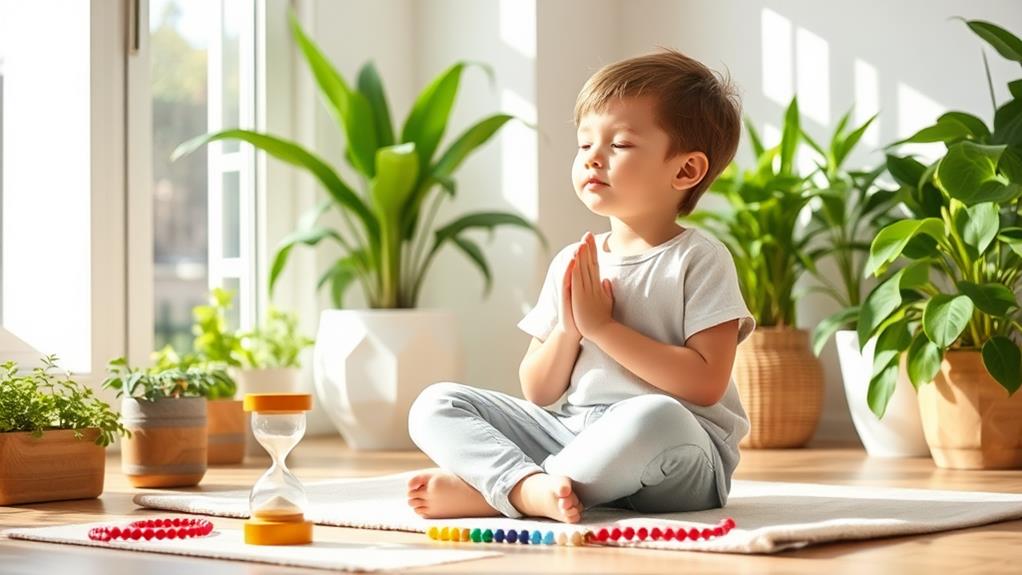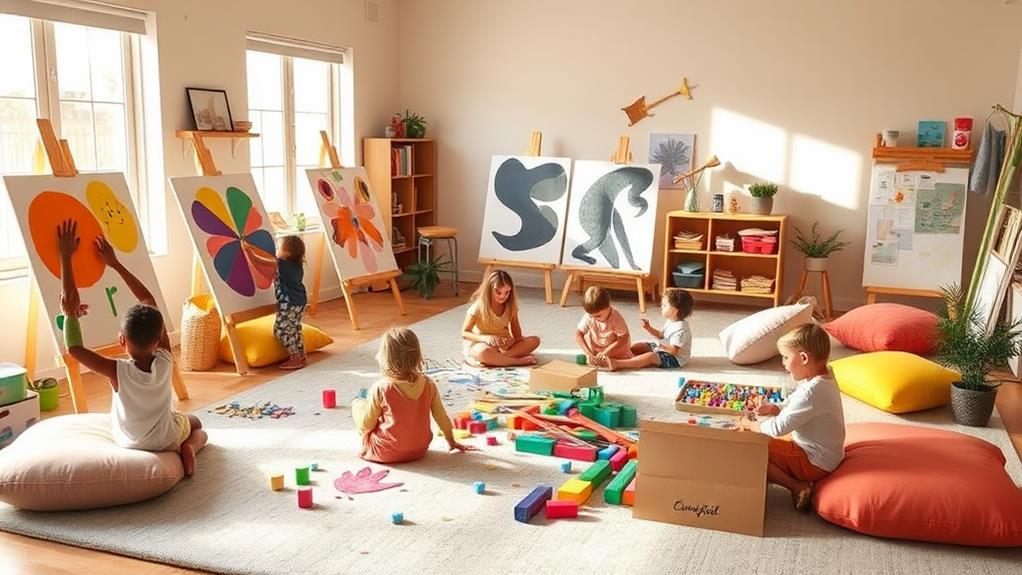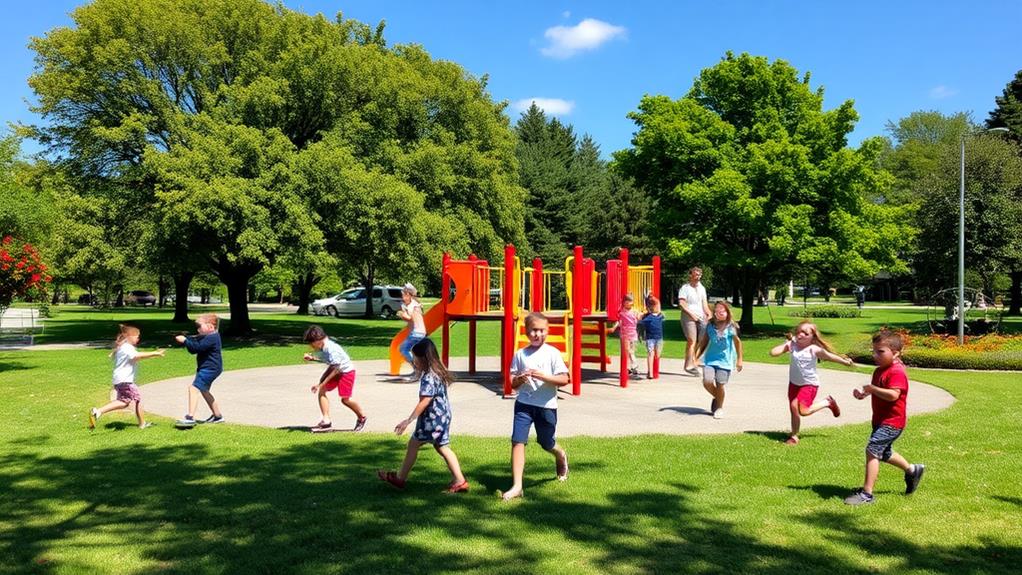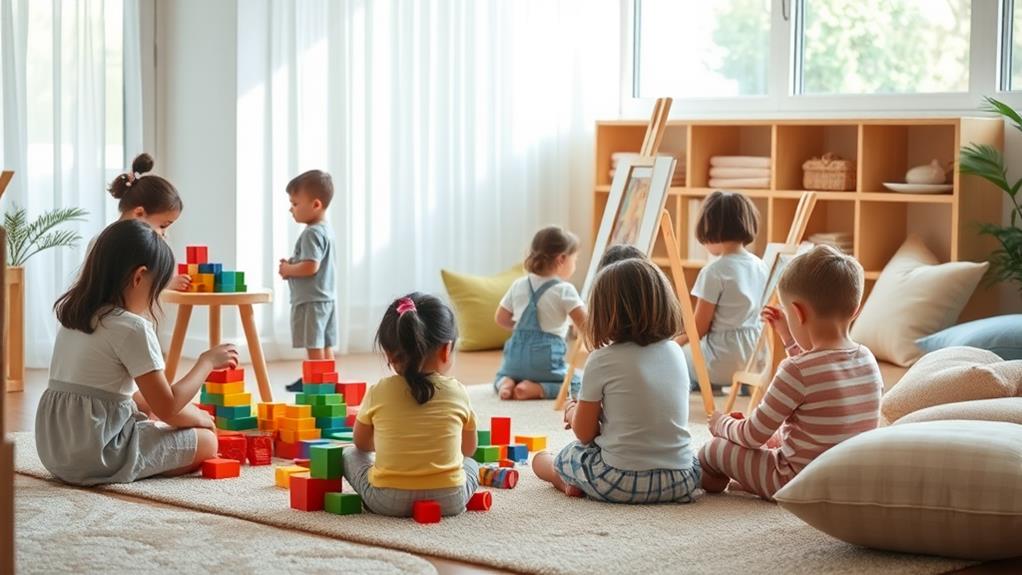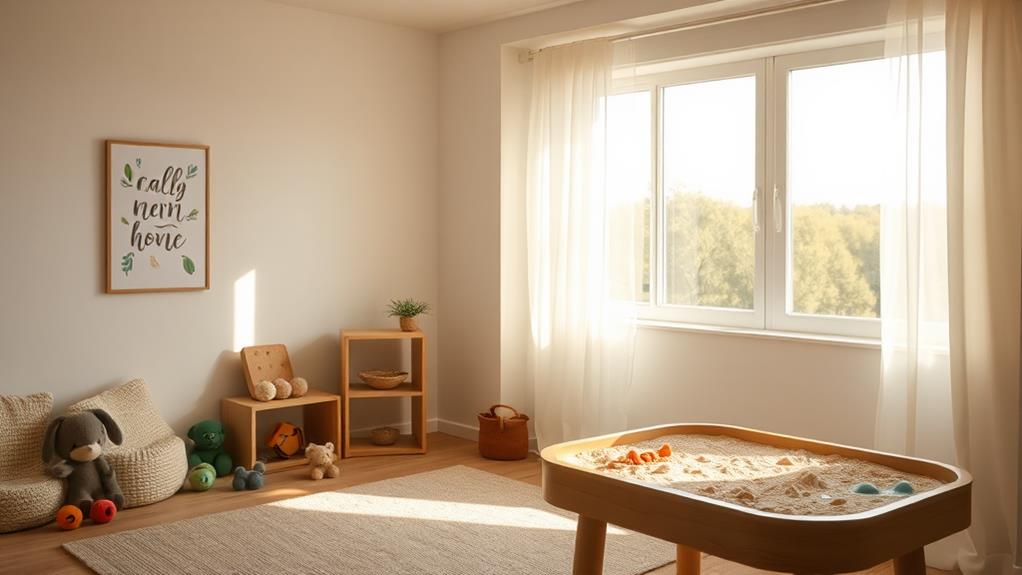When you're faced with a hyperactive child, finding effective ways to calm their energy can feel overwhelming. You might wonder how to establish a routine that works or what activities can help them channel their restlessness positively. By exploring practical methods that incorporate structure, physical activity, and mindfulness, you can create an environment that fosters calmness. But what specific techniques should you consider to truly make a difference? Let's look at the 20 strategies that can help you navigate this challenge more effectively.
Establish a Routine
Establishing a routine is crucial for calming hyperactive kids and creating a sense of stability in their lives. Kids thrive when they know what to expect, and a structured daily schedule helps them feel secure. By setting consistent times for meals, homework, and bedtime, you create a predictable environment that reduces anxiety and improves focus.
Start by involving your child in the planning process. Ask them about their favorite activities and include those in the routine. This way, they'll feel more invested and excited about sticking to the schedule.
Make sure to maintain flexibility, too; sometimes things don't go as planned, and that's okay.
Visual aids like charts or colorful calendars can help your child understand the routine better. You might even consider using timers to signal transitions between activities, making it easier for them to switch gears without getting overwhelmed.
Remember to celebrate small achievements as they follow the routine; this positive reinforcement encourages them to stick with it.
Ultimately, a well-structured routine not only calms hyperactive kids but also teaches them valuable time management skills they'll carry into adulthood. Stay patient and supportive as you work together to establish this important habit.
Incorporate Physical Activity
A structured routine sets the stage for incorporating physical activity, which plays a vital role in calming hyperactive kids. By adding regular bursts of exercise into your child's daily schedule, you can help them expend excess energy and improve focus.
Think of activities that your child enjoys, whether it's jumping on a trampoline, riding a bike, or playing tag with friends. These activities not only provide an outlet for energy but also promote physical health.
Aim for at least 30 minutes of physical activity each day. You can break this into shorter segments, making it easier to fit into your routine. For instance, a quick walk after dinner or a dance party in the living room can make a big difference.
Remember, it's important to create a fun atmosphere; when kids enjoy what they're doing, they're more likely to stick with it.
Additionally, consider involving siblings or friends in these activities. Social interaction can enhance the benefits of physical exercise, helping kids feel more connected and engaged.
Use Calming Techniques
Sometimes, calming techniques can make a world of difference for hyperactive kids. You can start by introducing deep breathing exercises. Encourage your child to take slow, deep breaths in through their nose and out through their mouth. This simple practice helps to relax their body and mind, making it easier for them to focus.
Another effective technique is progressive muscle relaxation. Guide your child to tense and then relax different muscle groups, starting from their toes and working up to their head. This method not only reduces tension but also promotes body awareness.
Mindfulness exercises can also be beneficial. Teach your child to pay attention to their surroundings, focusing on sounds, sights, and smells. This practice encourages them to stay present and can help decrease anxiety.
Visualization is another powerful tool. Ask your child to close their eyes and imagine a calm and peaceful place, like a beach or a quiet forest. This mental escape can be incredibly soothing.
Create a Quiet Space
Creating a quiet space for your child can significantly enhance their ability to relax and focus. This area should be free from distractions and filled with comfort. Consider setting up a cozy corner in their room or a quiet nook in your home where they can retreat when feeling overwhelmed.
Start by choosing a spot that's away from noise and chaos. Use soft lighting, like a warm lamp or fairy lights, to create a calming atmosphere. You can add cushions or a bean bag for comfort, making it feel inviting. Including items that help your child unwind, such as books, puzzles, or art supplies, can also be beneficial.
Encourage your child to use this space whenever they need a break. Remind them that it's a safe zone for relaxation and reflection. Establishing this routine helps them recognize when they need to take a step back and recharge.
With time, your child will learn to associate this quiet space with calmness, making it easier for them to focus and manage their energy levels.
Creating a dedicated environment like this can be a game-changer in helping them find peace amidst their busy lives.
Encourage Mindfulness Practices
Mindfulness practices can be a powerful tool for helping hyperactive kids find balance and calm. By introducing activities that promote mindfulness, you can encourage your child to focus their thoughts and emotions.
Simple techniques, like deep breathing exercises, can help them learn to slow down and center themselves. When they take deep breaths, they can feel the rise and fall of their chest, which encourages a sense of calm.
You might also consider incorporating mindfulness games, such as "mindful listening." This involves sitting quietly and paying attention to surrounding sounds, like birds chirping or leaves rustling. It helps kids practice being present and aware of their environment.
Another effective practice is guided imagery, where you encourage your child to imagine a peaceful place, like a beach or a forest. This visualization can transport them to a soothing mental space, reducing anxiety and restlessness.
Limit Screen Time
Screens can be a significant source of overstimulation for hyperactive kids, making it crucial to limit their exposure. When you notice your child becoming more restless or distracted after screen time, it's a sign that you might need to cut back.
Aim to set specific limits on how much time they spend on devices each day. You could establish screen-free hours, especially during meals or before bedtime, to help create a calming routine.
Encouraging alternative activities is also essential. Think about introducing board games, outdoor play, or arts and crafts to engage your child in different ways. These activities can help them channel their energy positively and reduce reliance on screens for entertainment.
You might also want to model good behavior by reducing your own screen time. Kids often imitate what they see. When they see you enjoying a good book or playing outside, they'll be more inclined to follow suit.
Promote Healthy Eating
A balanced diet can significantly impact a hyperactive child's behavior and focus. When you provide nutritious meals, you're fueling their body and brain with the right ingredients.
Start by incorporating plenty of fruits and vegetables, which are packed with essential vitamins and minerals. Whole grains, like brown rice and oatmeal, can help stabilize energy levels, keeping those hyperactive moments in check.
Don't forget healthy proteins! Lean meats, fish, beans, and nuts are great options that support brain function and help your child stay engaged.
Try to limit sugary snacks and drinks, as these can lead to energy spikes followed by crashes, making it harder for your child to concentrate. Instead, opt for natural snacks like yogurt, cheese, or popcorn.
Additionally, consider involving your child in meal planning and preparation. This can encourage them to try new foods and develop a positive relationship with healthy eating.
Make it fun! Experiment with colorful plates and creative presentations to make meals exciting.
Use Visual Schedules
Promoting healthy eating lays a solid foundation for your child's focus and behavior, but to further enhance their daily routine, consider using visual schedules. Visual schedules can help your child understand what's coming next, reducing anxiety and boosting their ability to concentrate. By displaying pictures or icons that represent different activities, you create a clear roadmap for their day.
Start by outlining the day's activities, from morning routines to bedtime. You can use simple drawings, printed images, or even stickers to represent each task. Make sure to include breaks and fun activities, as these will motivate your child to follow the schedule. When they know what to expect, they're less likely to feel overwhelmed or act out.
Involve your child in creating the schedule. This not only gives them a sense of ownership but also helps them remember the tasks. Hang the schedule in a visible spot, so it's easy for them to refer back to it throughout the day.
As they complete each task, they can cross it off or remove the image, providing a satisfying sense of accomplishment. Visual schedules can be a powerful tool in calming hyperactive kids, making daily life smoother for everyone.
Engage in Creative Play
Creative play offers a fantastic way to channel your child's energy while enhancing their focus and imagination. Engaging in activities like drawing, building with blocks, or role-playing can keep your child entertained and focused. These types of play allow them to express themselves and explore their creativity, which is essential for development.
When you set up a creative play session, consider incorporating different materials. Use colored paper, markers, or even recycled items to spark their interest. Encourage your child to create stories or scenarios, which can help them practice problem-solving skills and teamwork.
You might also want to join in the fun! Participating in their creative activities not only strengthens your bond but also shows your child that you value their ideas. This gives them the confidence to explore their imagination further.
Additionally, consider setting aside a specific time each day for creative play. This routine can provide structure and something exciting to look forward to.
Practice Deep Breathing
Deep breathing techniques can be a powerful tool for calming hyperactive kids. When your child feels overwhelmed or restless, taking a moment to focus on their breath can help bring them back to a state of calm.
Start by finding a quiet space where you can sit together comfortably. Encourage your child to close their eyes, if they feel comfortable doing so, and place their hands on their belly.
Next, guide them to inhale deeply through their nose, letting their belly expand like a balloon. Count to four as they breathe in, then have them hold that breath for a moment. Finally, let them exhale slowly through their mouth, counting to six. This process not only helps slow down their heart rate but also allows them to release pent-up energy.
Practicing deep breathing a few times a day can make a big difference, especially during moments of high energy or stress. You can even turn it into a fun activity by using colorful visuals or timers.
Over time, your child will learn to use deep breathing as a coping strategy, helping them manage their emotions and focus better in various situations.
Set Clear Expectations
After helping your child calm down with deep breathing, it's important to set clear expectations for behavior. When kids know what's expected of them, they feel more secure and are less likely to act out. Start by discussing specific behaviors you want to see. For instance, instead of saying, "Be good," you might say, "Please stay seated during dinner and use your indoor voice." This clarity helps your child understand exactly what you want.
Next, keep your expectations reasonable. Remember, hyperactive kids may struggle with impulse control, so break down tasks into smaller steps. For example, if you're asking them to clean their room, guide them by saying, "First, put your toys in the bin, then make your bed." This approach makes the task feel manageable.
Also, use positive reinforcement. When your child meets your expectations, celebrate their success! A simple "Great job!" or a sticker chart can boost their motivation.
Lastly, be consistent. Repeating expectations daily helps them become second nature. By setting clear expectations, you're not just guiding your child; you're also building their confidence and encouraging better behavior.
Offer Sensory Breaks
How can you help your hyperactive child refocus and recharge? One effective strategy is to offer sensory breaks throughout the day. These breaks give your child a chance to step away from intense activities and engage in calming, sensory-rich experiences. Think of it as a mini-vacation for their mind and body.
You can create a sensory break by introducing different textures, sounds, or movements. For example, let your child squeeze a stress ball, play with modeling clay, or use a fidget spinner. These activities can help them relieve pent-up energy and regain focus.
Additionally, you might consider playing soft music or providing a quiet corner with comfortable cushions for relaxation.
Timing is essential, so keep an eye on your child's energy levels. If you notice them getting restless or distracted, suggest a sensory break. It's important that they understand this is a normal and helpful way to recharge, not a punishment.
Encourage Outdoor Time
Regularly encouraging outdoor time can significantly benefit your hyperactive child. Spending time outside gives kids the chance to burn off excess energy, which is essential for their well-being. Nature offers a variety of stimulating sights and sounds that can capture their attention, making outdoor play more engaging than indoor activities.
When your child plays outside, they can run, jump, and explore, all of which can help improve their mood and focus. Activities like climbing trees, riding bikes, or playing tag not only provide physical exercise but also enhance their coordination and social skills. You might even find that these interactions with peers help them develop patience and teamwork.
Try to set aside time each day for outdoor play, whether it's a trip to the park or just a walk around the neighborhood. Encourage your child to engage with the environment, perhaps by collecting interesting leaves or watching birds.
These moments can foster curiosity and creativity, making outdoor time not just a release of energy, but also an opportunity for learning. By prioritizing outdoor activities, you're giving your child the tools they need to thrive both physically and emotionally.
Utilize Positive Reinforcement
Outdoor play can create a positive atmosphere where your hyperactive child feels motivated to behave well. One effective way to encourage this is by utilizing positive reinforcement. When your child exhibits good behavior, like sharing toys or listening attentively, acknowledge their efforts with praise or small rewards. This approach can enhance their self-esteem and establish a pattern of positive actions.
Make sure you're specific with your praise. Instead of just saying, "Good job!", try "I loved how you shared your toys with your friends today!" This clarity helps your child understand exactly what they did right.
You can also create a reward system, where they earn points for good behavior that can later be exchanged for a treat or special privilege.
Implement Structured Activities
Structured activities can channel your child's energy in a productive way. When you implement a routine filled with engaging tasks, you provide your child with a sense of stability and purpose. Consider activities like sports, arts and crafts, or even simple chores. These structured routines give your child clear expectations, which can reduce anxiety and impulsive behaviors.
Try to tailor activities to your child's interests. If they love music, encourage them to participate in lessons or join a school band. If they're into sports, sign them up for a team. These activities not only focus their energy but also help in developing skills and confidence.
In addition, keep the activities predictable. This means sticking to a schedule so your child knows what to expect and when. Visual charts can be beneficial, providing a clear picture of their day. A sense of accomplishment after completing structured tasks boosts their self-esteem and can lead to calmer behavior.
Don't forget to allow for breaks between activities. Short, active breaks can recharge their energy and help maintain focus.
Foster Social Skills
Building on the foundation of structured activities, fostering social skills can further help your hyperactive child develop positive interactions with peers. Encouraging your child to engage in group activities, like team sports or cooperative games, provides them with opportunities to learn essential social cues. They can practice taking turns, sharing, and communicating effectively with others.
Modeling positive behavior is crucial, too. Show your child how to initiate conversations, handle disagreements, and express their feelings appropriately. Role-playing different social scenarios at home can be a fun way for them to learn and gain confidence in their interactions.
Consider enrolling your child in clubs or classes that align with their interests. This not only helps them meet new friends but also gives them a sense of belonging. Remember to celebrate their successes, no matter how small. Positive reinforcement boosts their self-esteem and encourages them to continue building those skills.
Lastly, be patient. Developing social skills takes time, especially for hyperactive kids who may struggle with impulse control. By providing guidance and support, you're helping them navigate social situations more effectively, which can lead to lasting friendships and improved self-confidence.
Explore Therapeutic Options
When considering ways to support your hyperactive child, exploring therapeutic options can be a valuable step. Various therapies can help improve focus, manage energy levels, and enhance emotional regulation.
One popular option is behavioral therapy, which involves working with a therapist to develop strategies for positive behavior changes. This approach can provide both you and your child with tools to better navigate daily challenges.
Another effective option is occupational therapy. An occupational therapist can help your child develop skills for everyday tasks, while also providing sensory integration techniques that may calm hyperactivity.
Play therapy is also worth considering; through play, therapists can help children express feelings and work through frustrations in a safe environment.
Don't overlook the benefits of art or music therapy, either. These creative outlets can serve as calming activities, allowing your child to express themselves and channel their energy in positive ways.
Lastly, remember that each child is unique, so what works for one may not work for another. It's important to communicate openly with your child and any professionals involved to find the best therapeutic fit for your family.
Schedule Downtime
Finding the right therapeutic options can lead to a clearer understanding of how to support your hyperactive child. One effective method is scheduling downtime. It's essential for kids to have moments of rest amidst their busy lives. When you plan regular breaks, you help them recharge and regain focus, which can significantly improve their behavior.
Consider incorporating quiet time into your daily routine. This could be a short period for reading, drawing, or even just sitting quietly. It doesn't have to be long—10 to 15 minutes can make a big difference. You might also create a cozy space in your home where your child feels safe and comfortable to unwind.
Another idea is to set aside time for mindfulness activities, like deep breathing or gentle stretching. These practices can help calm their minds and bodies, fostering a sense of peace.
Communicate Openly
Open communication is crucial for understanding your hyperactive child's needs and emotions. When you create an environment where your child feels safe to express themselves, you're laying the groundwork for better interactions.
Start by asking open-ended questions about their day or feelings. This encourages them to share more than just one-word answers.
Listen actively when they talk; show that you value their thoughts and feelings. Sometimes, just nodding or responding with phrases like "I see" can make a huge difference.
It's important to validate their emotions, even if you don't fully understand them. Let them know it's okay to feel the way they do.
Using simple, clear language helps your child grasp what you're saying. Be patient and give them time to process your words; it's not always easy for them to articulate their feelings.
Be Patient and Understanding
Being patient and understanding is essential when supporting a hyperactive child. It's important to remember that their behavior isn't a reflection of your parenting skills or their character. Each child is unique, and their hyperactivity can stem from various sources, including energy levels, emotions, or even environmental factors.
By practicing patience, you create a safe space for them to express themselves without fear of judgment.
When you approach situations with empathy, you help your child feel valued and understood. Instead of reacting with frustration when they struggle to focus, take a deep breath and remind yourself that their hyperactivity can be overwhelming for them too. Acknowledge their feelings and reassure them that it's okay to feel restless or distracted.
Make time for breaks during activities, allowing your child to recharge. Use positive reinforcement to celebrate their small achievements, which can motivate them to stay engaged.
